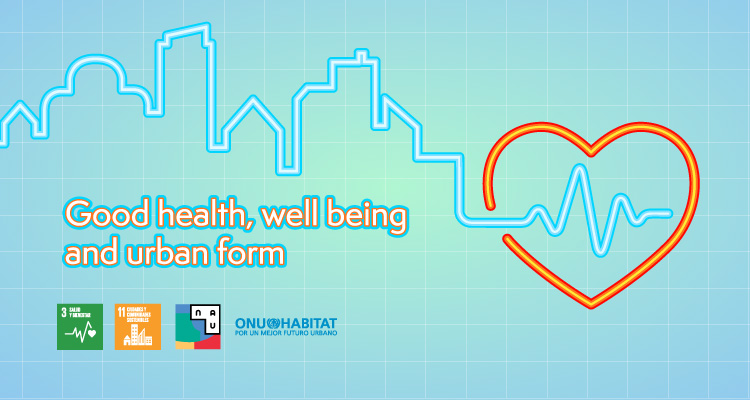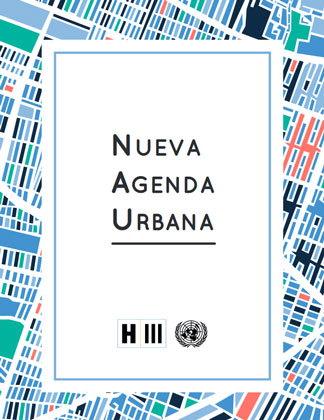
There is currently a growing interest in how physical inactivity, obesity and chronic health problems have an apparent close relationship with urban factors. Urban planning researchers are broadening their horizons and paying more attention to how their professional fields affect human health.
The links between physical activity and health care are well known: Physical inactivity contributes to increasing the risk of many chronic diseases and conditions, such as obesity, hypertension, diabetes, colon cancer, osteoarthritis, osteoporosis and coronary diseases. In many cities of the world, obesity has reached epidemic proportions without making distinctions of race, age or socioeconomic status.
"Aging, globalization, urbanization, and the rise in obesity and physical inactivity in the Americas have made cardiovascular diseases the leading cause of death and disability in the region, accounting for almost one-third of all Regional mortality, with the risk generally higher in men compared to women." World Health Organization1
The implications of health and "place" relationship are far-reaching
“It may not be common to explicitly consider health when selecting a place to live, but research indicates it would be worth considering.”
A exploratory study reveals a possible relation between health and urban form , where
In contrast, compact cities are associated with lower levels of obesity, diabetes, high blood pressure, heart disease and asthma.
According to experts from the World Health Organization (WHO) and UN-Habitat, urban health problems are only growing, partly because cities are also growing. Half of the world's population will live in cities by 2050, and two billion of them will be in slums.
The health landscape becomes much more complicated when health problems among urban dwellers are related to the economic class, partly because the predominantly poor and minority neighborhoods have been trapped by disastrous urban planning decisions that keep them isolated and far away of an adequate sanitary infrastructure.
Drag to the ODS3 those health and well-being problems that a bad urban design could cause.
A poorly planned city does not contribute to good health and well-being
Poor transportation and excessive dependence on cars have made people spend more time commuting. Likewise, the availability of healthy foods is restricted by poor urban planning decisions and increasingly long work schedules that lead people to opt for low nutritional convenience food diets. The interaction of these factors is reflected in the growing rates of overweight and obesity, especially in urban areas.3

Puestos de comida callejeros en la CDMX.
9 out of 10 people in the world breathe contaminated air
Paradoxically, in many cities there are people who take advantage of the relative density of their city to transport themselves by bicycle as a healthy activity, however, air pollution has a negative impact on health. It is a negative feedback loop : Once you exercise, you increase your breathing rate, you breathe more, more air goes to your lungs and your exposure to air pollution increases. 3
Many of the world's mega cities exceed the air quality levels recommended by WHO by more than five times.
But there is still hope!
 According to public health and urban planning research available, there is moderate support for the assertion that urban form can have significant (positive or negative) health influences.
According to public health and urban planning research available, there is moderate support for the assertion that urban form can have significant (positive or negative) health influences.
If this statement is true, health professionals can improve public health by advocating for more compact cities. Public health researchers can refine their understanding of physical activity, obesity and morbidity by including variables of urban forms in their analyzes. 4
Similarly, the key to solving all these urban health problems is to move away from policy approaches focused on treatment-oriented health care, which recognize health problems only after they begin.
The good news is that city planners are beginning to recognize that health problems are growing in the center of the city and that diseases can be treated before they appear, with good urban planning.

The New Urban Agenda states:
55. We commit ourselves to fostering healthy societies by promoting access to adequate, inclusive and quality public services, a clean environment, taking into consideration air quality guidelines, including those elaborated by the World Health Organization.
[…]
References
1 PAHO/WHO. (n.d.) Mortality in the Americas. Recovered from https://www.paho.org/salud-en-las-americas-2017/?tag=obesity
2 R. Ewing, T. Schmid, R. Killingsworth, A. Zlot, S. Raudenbush. (2003). Relationship Between Urban Sprawl and PhysicalActivity, Obesity, and Morbidity. American Journal of Health Promotion, Inc.
3 Marshall, A. (2016). The Complicated Problem of Urban Obesity. Citylab. Recovered from https://www.citylab.com/equity/2016/04/obesity-is-a-city-problem/476547/
4 J. Marzluff. (2008). Urban Ecology: An International Perspective on the Interaction Between Humans and Nature. Springer.
Share











